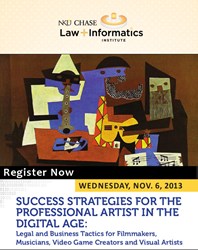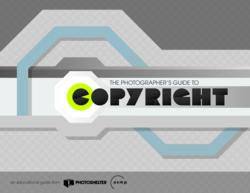 Seven visual arts associations have submitted a proposal to Congress that outlines key components of potential copyright small claims legislation. Establishing a small claims process would enable visual artists to seek relief for relatively modest copyright infringement claims.
Seven visual arts associations have submitted a proposal to Congress that outlines key components of potential copyright small claims legislation. Establishing a small claims process would enable visual artists to seek relief for relatively modest copyright infringement claims.
It would also help maintain respect for copyright laws and protect the livelihoods of creators who earn significant income from licensing their images. When infringers use a creator’s images without authorization, the creator’s revenues can suffer.
The proposal (which can be viewed here in a summary white paper) is a collaboration between American Photographic Artists (APA), American Society of Media Photographers (ASMP), Digital Media Licensing Association (DMLA), Graphic Artists Guild (GAG), National Press Photographers Association (NPPA), North American Nature Photography Association (NANPA) and Professional Photographers of America (PPA). Together, these associations represent the interests of hundreds of thousands of photographers, photojournalists, videographers, illustrators, graphic designers, artists, and their licensing representatives.
The proposal advocates for the creation of a small claims tribunal within the U.S. Copyright Office. The basic framework for small claims legislation is in large part consistent with the legislative recommendations set out in the “Copyright Small Claims” report released in late 2013 by the U.S. Copyright Office.
The proposal asserts that the cost and burden of pursuing copyright infringement lawsuits in federal district courts is prohibitive. According to the white paper, the cost of bringing an infringement case is far beyond the reach of most visual artists and the time and energy invested in a single case can be overwhelming to creators whose sole source of income is their ability to market their work.
All too often, visual artists are left with no effective way to vindicate their rights. The visual arts associations believe a small claims process within the Copyright Office would provide a fair, cost-effective and streamlined venue in which creators could seek relief for relatively modest copyright infringement claims. The system could also combat public perceptions that creative works posted online are free for the taking and the copyright laws are more effective in protecting the interests of big content providers than those of individuals or small businesses.
“The harsh reality is that the vast majority of creators in America are currently excluded from copyright protection,” said David Trust, CEO of Professional Photographers of America. He believes a small claims process would level the playing field for small creators.
For more information, please contact Professional Photographers of America at 800-786-6277 or copyrightdefense(at)ppa(dot)com.








